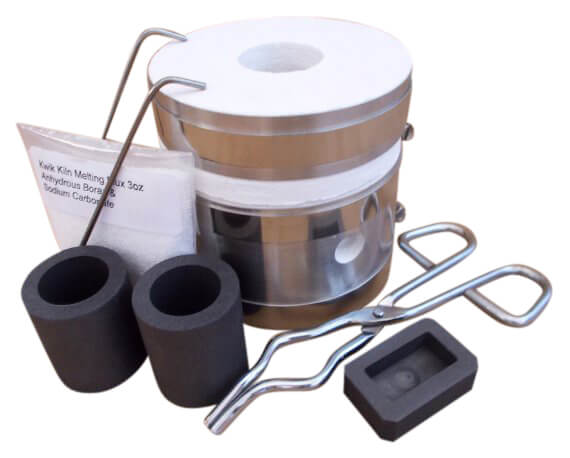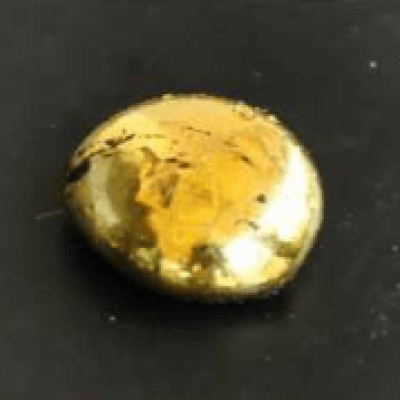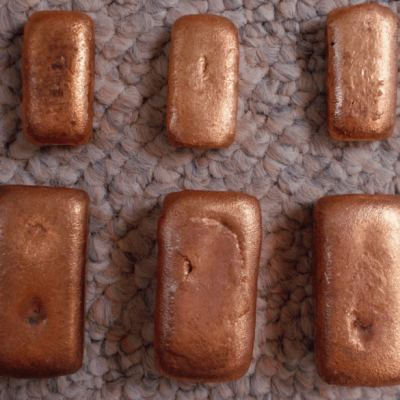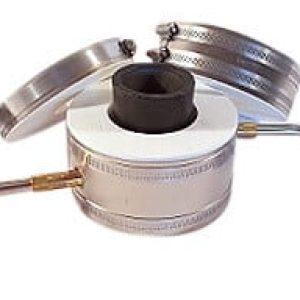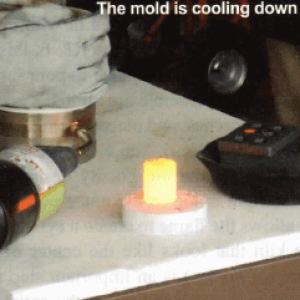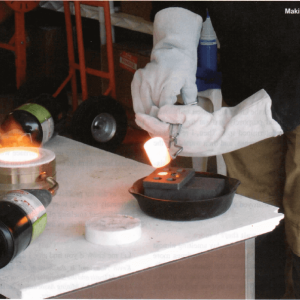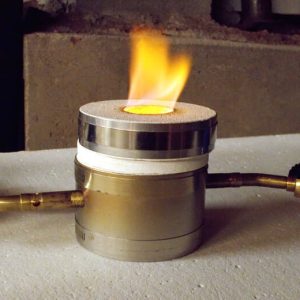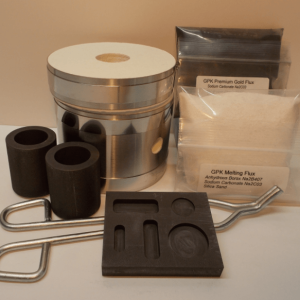Two pencil tip torches are required to operate this kiln, such as Bernzomatic UL2317. Torches and propane bottles not included – available separately at local retail stores.
Please note: This mini kiln is not recommended for smelting ore concentrates, due to the limited capacity for both cons and refining flux 1 to 3 ratios.
CRUCIBLE EROSION
External crucible erosion is directly related to the flame from the torches contacting the exterior surface of the graphite crucibles used in the Kwik Kiln. The graphite crucibles are slowly consumed during the process. However If the torches are turned up too high, the blue pencil tip portion of the flame will cut grooves into the exterior of the crucible, causing premature failure of the crucible. The valves used on the Bernzomatic Torches are very touchy when the torches are placed on their side and no two torches seem to perform the same.
The following procedures will help to eliminate exterior crucible erosion:
Align the torches with the ports in the kiln and place the tip of them just inside of the stainless steel shell, approximately ¼” inch.
Remove one of the torches and light it. Adjust the flame to where the center blue pencil flame is approximately 1” to 1 ¼”. Lay the torch on its side and insert the torch into the port. With the lid and spacer removed, adjust the flame so that the tip of the blue flame penetrates inside of the kiln approximately ¼” to ½”.
Open the valve on the other torch and adjust the flame as described, so that both flames are equal. Place the spacer onto the kiln and let the kiln warm up for a few minutes without the lid in place. When the kiln gets hot, the blue torch flames seem to recede into the ports as the torches stabilize. Once the kiln is hot, the combustion taking place inside the kiln is much more efficient than when the kiln is cold and you can then re-adjust the flame until the blue pencil tip of the flame is penetrating into the kiln approximately ¼” to ½”.
Following the procedures described will help to eliminate the exterior crucible erosion and the kiln will ultimately reach the temperatures needed for melting. You can also rotate the crucible so that any grooving is not placed into the path of the flames entering the kiln, as well. Observing the interior of the Kwik Kiln and the flames in the daylight is difficult. However, if you take your Kwik Kiln outside at night, it’s easy to see what is going on inside of it. Carefully monitor your crucibles exterior as you use them. With proper adjustment of the torches, I have crucibles with over 20 pours on them.



